- Home
- M G Vassanji
And Home Was Kariakoo Page 11
And Home Was Kariakoo Read online
Page 11
These are the Shadhiliyya, then.
I lived in this city, at the end of this street, yet never saw or dreamt anything like it, was never aware that prayers of this sort went on in our midst. Now after many years I have returned, and connect this ritual prayer to a larger history, to the world, see it as a part of a global mystical fraternity.
Politics have not been far from the life of these tarikas or Sufi orders, which is not surprising, because they are both populist and non-conforming and reach out to the simple and less privileged. In India and Africa, many believe, it is the Sufis and mystics who have been largely responsible for the spread of Islam among the masses. The following is cultish and centres around the spiritual master, in much the same way that among many Indians worship often centres around a guru like Sai Baba. The language used is the vernacular and accessible, and joint worship and song are the expressions of devotion to God. It is the opposing, judgemental orthodox faith, Arabic- and scripture-based, that has the ear of the sultan—or whatever ruler is in place. If everyone were to declare, like the Iranian mystic Mansur, “I am the Truth,” where would government be? Where would orthodoxy be?
In 1905 in Tanganyika, a massive insurrection against German rule erupted and spread out in a good swath of the country, involving many ethnic groups. The war was inspired by a medicine man called Kinjikitile, whose village, Ngarambe, was close to Kilwa. Kinjikitile introduced blessed water to his followers, instructing them that if they took it (drank it or sprinkled themselves with it, the ritual is not quite clearly described in the texts) and followed certain rules of abstention, then any German bullets shot at them would turn to water and be rendered harmless. Thus began the Maji Maji War. The blessed water (maji) spread, taking the war with it. It has been conjectured that members of Sufi orders were among those who initiated the warriors with the water ceremony. There is no hard evidence for this, but it would not be surprising. People of many beliefs resented the Germans, and the Muslims had special grievance against the European domination of the Muslim areas of the world. The Germans in turn were wary of the Muslims, wavering between policies of tolerance and hostility. They even considered encouraging natives to raise pigs, in the hope that a liking for pork would discourage them from adopting Islam.
Following the Maji Maji War, the Germans remained nervous about the Sufis. In 1908 a pamphlet called the Mecca Letter began circulating in many parts of the country and caused much excitement; written in Arabic, it was read in the mosques and discussed by the sheikhs. Millenarian in content, it warned Muslims against deviation from the true faith. And furthermore, those who did not pass the letter on would face dire consequences. Implicitly anti-European, it put the scare into the government that it could instigate another uprising, along the lines of Maji Maji. A number of people were arrested, and in 1909 the colonial government banned the practice of dhikri, the collective Sufi chanting. It was allowed again two years later.
Not much is known about the origins of the mysterious Letter. According to the historian August H. Nimtz, “there is at least circumstantial evidence that the Qadiriyya [Sufi sect] was involved in [its] dissemination”—a few prominent members of the sect have been named as disseminators. But Muslims also learned to work with the government, which had a “Good Muslim” list. The Ottoman–German alliance during the First World War was played upon, with the raising of both flags, German and Ottoman, at public places. “In locations where brotherhood [that is, Sufi] leaders had friendly relations with the Germans … it is likely that they helped by spreading word of the holy war as well as by resisting the British efforts.”
In 1914, the leader of the Qadiriyya movement in Mpwapwa was a detective, presumably a spy.
10.
Burton and Speke, and the East African Expedition of 1857
The Romance of Exploration
ON A BRIGHT SUNNY DAY AT NOONTIME ON JUNE 16, 1857, the English explorer Richard Burton departed Zanzibar for the Tanzanian mainland on Sultan Majid’s corvette, the Artemise, which fired off a gun salute as it sailed off. “We quit Zanzibar Island in dignified style,” wrote Burton, and thus began the so-called East African Expedition sponsored by Great Britain’s Royal Geographical Society. Sub-Saharan Africa was still Europe’s “dark continent”; little was known about it, besides ancient speculation and fantasy, and more recent accounts by a few missionaries relentlessly afoot on the bush trails with their Bibles. A mid-century map of Africa shows an empty space in the east, in a region between the Indian Ocean and a vast slug-shaped lake in the centre, which by its odd shape betrays the ignorance of the cartographer. The coastal towns—Malindi, Mombasa, Kilwa—and Zanzibar were of course known, but more as belonging to the Indian Ocean trading zone. The purpose of the expedition was to explore the limits of that inland lake, which Burton called the Sea of Ujiji or Unyamwezi Lake and later the Tanganyika Lake. With Burton were his English companion, John Speke, two “half-caste” Goan “boys,” two African gun carriers, and eight Baluchi armed guard, courtesy of the sultan.
Burton’s description of the Zanzibar coastline as it receded behind him that June day is quite marvellous: with a few deft strokes he paints a picture of the island as it appears from the sea, a picture that has not changed much in a century and a half.
[The Artemise] slowly gliding out of Zanzibar harbour, afforded us a farewell glance at the whitewashed mosques and houses of the Arabs, the cadjan-huts, the cocoa-grown coasts, and the ruddy hills striped with long lines of clove. Onwards she stole before a freshening breeze …
the land faded from emerald to brown, and from brown to hazy purple, the tufts of the trees seemed first to stand out of, then to swim upon, the wave, and as evening, the serenest of tropical evenings, closed in over sky, earth, and sea, a cloud-like ridge, dimly discernible from our quarter, was all that remained of Zanzibar.
The Zanzibar coastline has evoked the romantic impulse in many a traveller, and Burton was no exception, especially when recalling it some years after the voyage took place. The Artemise carried all the supplies the expedition would need, and across the channel on the mainland Burton had already arranged to hire a large number of porters to carry them on the journey ahead.
At the height of empire in the nineteenth century, accounts of explorers in East Africa made gripping reading in the western world, providing details of an alien, unknown, and dangerous landscape, at the same time describing the heroism of the men who undertook these journeys, which lasted many months. The books were cleverly marketed, keeping in mind their exotic subject and readers’ sensibilities, the illustrations in them selected and redrawn from the explorers’ own sketches. (It should not surprise us, then, to see in them grotesque racial caricatures.) Thus, within a year of its publication by John Murray in 1857, David Livingstone’s Missionary Travels had sold 25,000 copies in England, thrilling its readers with stories of a heroic and good Christian man in a savage and cruel land. Livingstone had set off for South Africa—by then long settled by the Dutch—in 1840 as a missionary, and ended up travelling vast tracts of the African interior with only Africans as his companions and guides. Missionary Travels was published after his first return to England, sixteen years after he left, when he was arguably perceived as more heroic explorer than missionary.
The lives and personalities of the explorers had become the stuff of marketable legend. As Louise Henderson writes:
… a host of Victorian mythmakers made it their business to profit from turning individual explorers into heroes or villains, ensuring that reputations would often be well-established before these adventurers had even returned from the field.
Speculations about David Livingstone’s unknown whereabouts for long periods after his return to Africa fed the public imagination, as did his death there, and Henry Morton Stanley has been immortalized for his “I Presume” moment, when he found Livingstone.
It was in this climate of celebrity exploration and best-seller travel-writing that the Burton–Speke saga took place. Burton
, who led the East African Expedition, was already famous as a traveller to exotic places; Speke, the junior member, was relatively unknown. The two men’s accounts of their journey, which lasted a little over two years, provide fascinating descriptions of the country, Tanganyika, the mainland of Tanzania, that they travelled through—the landscapes, the peoples, the cultures in all their diverseness, even when we allow for their narrators’ biases and misunderstandings, and their personality quirks. They are even more fascinating when you come from the place itself and see a piece of its history revealed through this objective yet infuriatingly faulty lens. Little else has been written about the country in that period. To an East African it would be of interest that the Nyamwezi people of the Tabora region were famous as porters and seasoned, knowledgeable travellers (and their donkeys as especially good for the arduous journeys on diverse terrain); unlike their later caricature as beggars, the Gogo (properly called the Wagogo, or singular Mgogo, and their land Ugogo), inhabiting the vital centre of the country, were feared, and held the key to any access to the interior; the Zanzibar sultan’s reach extended in various degrees into the hinterland right up to eastern Congo. We learn about the habitations of the different peoples, how they covered and adorned themselves, what their politics were.
But Burton’s and Speke’s accounts also reveal a very human drama, and it was this, not the country itself, that grabbed the western imagination in the decades that followed. The story of that expedition has now become one mainly of the conflictual and ultimately tragic relationship between the two men, so opposed in their personalities, that developed during the return leg of the journey and continued to its tragic end after their arrival back home. That story is linked to the obsession with the discovery—at least from the European point of view—of the source of the River Nile. It has been retold many times.
The East Africa Expedition and Its Tragedy
The two men left the East African coast at a point called Kaole near present-day Dar es Salaam and headed west into the country with a large entourage of porters, soldiers, and other assistants, and a quantity of supplies to last them two years. They marched single file, led by a “half-caste” guide called Ahmed bin Salim, and a man from the coast called Mwinyi Wazira, whom Burton describes as a “huge, broad-shouldered Sawahil with a coal-black skin”; in the vanguard were also the Baluchi soldiers carrying the sultan’s red flag and armed to the teeth with matchlocks, sabres, and “khanjars” (daggers); in the middle were the porters and various assorted men; the rear was brought up by one of the Englishmen. Someone in the front carried the Union Jack—Burton doesn’t tell us who.
They set off on the old trade route that began at Bagamoyo—the major slave and ivory depot at the Indian Ocean—and terminated at Ujiji, a similar depot at Lake Tanganyika, where slaves and ivory were brought from Congo, across that long lake that forms a natural continental boundary. The route initially followed the valley of the Ruvu (then called Kingani) River southwest from the coast until the tributary Mgeta branched off, from where they then turned northwest. The landscape was wet and at times marshy, the river shrouded in bush. At the lower end this trek is well inside what is now the Mikumi game reserve, therefore not surprisingly an abundance of wildlife was seen. Crossing the Uluguru (then called Usagara) range, which reaches heights of over 6,000 feet, they arrived at the semidesert terrain of Ugogo. Here the land is flat and dry, covered with thorn bushes and low trees for miles on end, interrupted by isolated outcroppings of granite.
The country traversed, east to west, from the Indian Ocean to Lake Tanganyika, was observed and described in terms of five geographical sections: Ruvu (Kingani) valley, Uluguru (Usagara) highlands, Ugogo semi-desert, Unyamwezi, and Lake Tanganyika. On this busy highway or “trunk road,” caravans numbering a thousand or more regularly passed each other, pausing to exchange messages (the Europeans sent reports and requests to sponsors in Zanzibar), inquire about road conditions, and barter for essentials which had run out. At the important way stations, such as Zungomero, at the Kingani–Mgeta junction, and Ugogi, at the beginning of the desert, the caravans took long rests, replenished manpower and food. Armies of touts descended to offer services, as at any road station today. At Zungomero, “a hotbed of pestilence,” the expedition waited fourteen days for the arrival of promised porters. Neither Zungomero nor Ugogi now exist on the maps.
Each porter carried a load of seventy pounds (two “frasilahs,” in the measure used in the shops even up to the 1960s). The loads consisted of shells, copper wire, and cloth; provisions for cooking; arms and ammunition; camp furniture; surveying and other instruments, tools, and stationery. The first three items were the “currency,” for buying stuff and paying off chiefs for permission to travel through their land. Shells came in numerous varieties; wire was used for ornamentation such as armlets. Cloth came in three major varieties: marikani, a coarse white cotton from Salem, Massachusetts; kaniki, a light black-dyed cloth from India; and coloured checkered cloth from India. (Marikani and kaniki were disused after independence in 1961, perhaps because they were seen as demeaning to the African.) Among the “miscellaneous” items were needle and thread, a little coffee and a lot of tea, brandy and cigars, “curry stuff,” and a Union Jack.
On the way the travellers suffered extreme discomfort and encountered malaria, sleeping sickness, and small pox. As early as the Kingani valley, dubbed by one of his men as the “Valley of Death,” Burton became delirious with a malarial fever that lasted twenty days, accompanied by nightmares and the sensation of a “divided identity”; his companion seemed to fare worse. “Unhappy Zungomero,” where he describes his hut thus, “the roof was a sieve, the walls were systems of chinks, and the floor was a sheet of mud,” he also calls the “Slough of Despond.” They were frustrated by tribespeople, hyenas feasted on their donkeys, bees swarmed them, and the men quarrelled, became mutinous, molested women, or absconded.
After the desert of Ugogo, the next important terminus was Kazeh, site of the modern town of Tabora in Unyamwezi, where they were given hospitality by a Khoja Indian called Musa Mzuri. Departing from Kazeh they arrived on the shores of Lake Tanganyika in February 1858—eight months after they had departed from Zanzibar.
The two men turned back from Ujiji, arrived at Kazeh, where Burton was sick. Speke, feeling better, took the northbound trail towards a lake he had heard the local Arab traders speak about. At a town called Mwanza he came to the shore of the lake, which was vast, and he named it Lake Victoria, convinced that it must be the source of the Nile. It was a moment of inspiration. The fact that one man named a lake using local custom, while the other named it after the reigning English queen surely reflects a difference in their personalities. Speke returned to Kazeh, but Burton did not believe his theory about the Nile. As Burton would write, Speke had no scientific reason for his conclusion except “a woman’s reason”: I think so because I think so. They quarrelled. On the way back to England from Zanzibar, they arrived at Aden, where Burton stayed and Speke went ahead. According to Burton, who was the leader of the expedition and upon whose recommendation Speke had been taken on, they had agreed that Speke would not reveal the results of their expedition until Burton arrived. He returned to England on May 21, 1859, twelve days after Speke, to find that not only had Speke revealed his “discovery” of the Nile’s source, but also he was being feted in London, and moreover had been asked by the Royal Georgraphical Society to undertake another expedition to confirm the discovery. The following year, in 1860, Speke left with James Grant to prove his conjecture and the two returned almost three years later to great acclaim, having announced previously by telegram from Khartoum that “The Nile is settled.”
The immensely egotistical and accomplished Richard Burton, long used to the limelight, was sidelined. He still did not believe that the Nile question had been settled, and a meeting was set up in Bath on September 16, 1864, where the two men were to present their points of view. But on the afternoon before the meeting, Speke shot
himself in an apparent accident while hunting. Speke was an expert hunter, familiar with the gun he had used; and so the speculation arose, was his death a suicide or an accident?
The Protagonists: Two Victorian Englishmen
So different were Burton and Speke from each other that it almost becomes incumbent upon us to take sides, and biographers of either one of them and storytellers of the Nile have not failed to do so.
Richard Burton is the most intriguing and enigmatic of all the Victorian travellers, a man entirely self-educated, familiar with many cultures and languages, a self-admitted depressive, moody but with a sly sense of humour. With his dark, sombre features he has been called a “Victorian Heathcliff,” and an “explorer, scholar, poet, supreme linguist, student of pederasty and nymphomania, popular hero, prolific author, mystic.” A romantic, and attractive from a distance. Livingstone disliked him. So did Stanley and many others. As a disguised British secret agent Burton had intrigued with warring peoples in Afghanistan in the machinations of European empires in the East that came to be known as the Great Game. He gained fame by entering the city of Mecca, forbidden to non-Muslims, in the garb of an Afghan Pathan that he donned while still in London. In the words of his wife, “He did not go disguised; he simply became a Moslem, identifying with every aspect of Moslem life and faith. Arabic became his native tongue.” According to one source, he even had himself circumcised for the purpose. And unlike other travellers to Africa, he did not brandish a Bible; in fact in his writings he does not display a religious sensibility at all.

 What You Are
What You Are A Delhi Obsession
A Delhi Obsession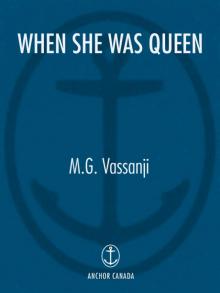 When She Was Queen
When She Was Queen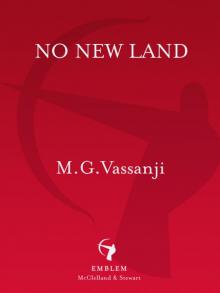 No New Land
No New Land Nostalgia
Nostalgia Mordecai Richler
Mordecai Richler The Book of Secrets
The Book of Secrets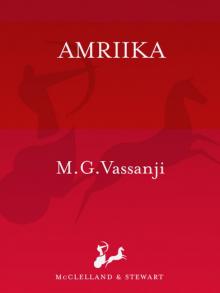 Amriika
Amriika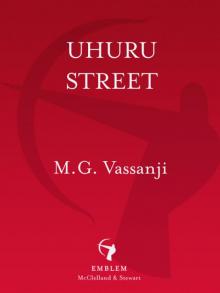 Uhuru Street
Uhuru Street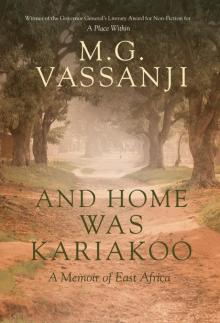 And Home Was Kariakoo
And Home Was Kariakoo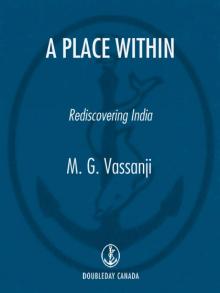 A Place Within
A Place Within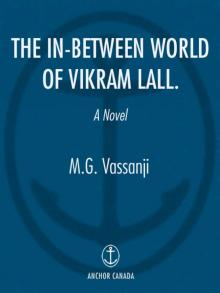 The In-Between World of Vikram Lall
The In-Between World of Vikram Lall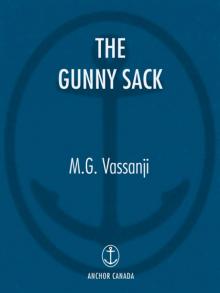 The Gunny Sack
The Gunny Sack